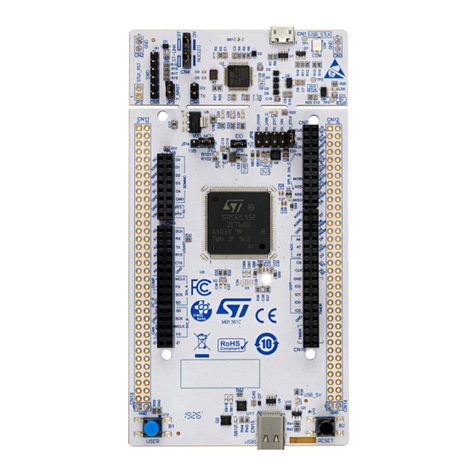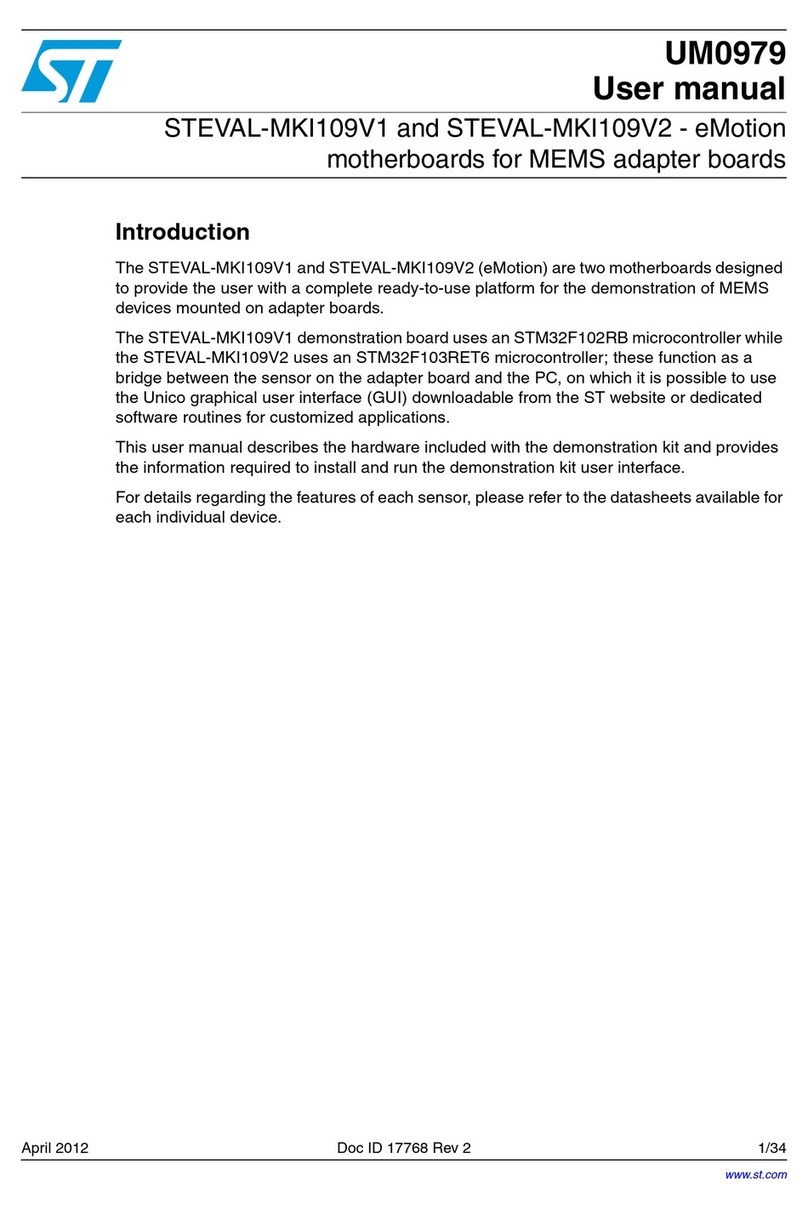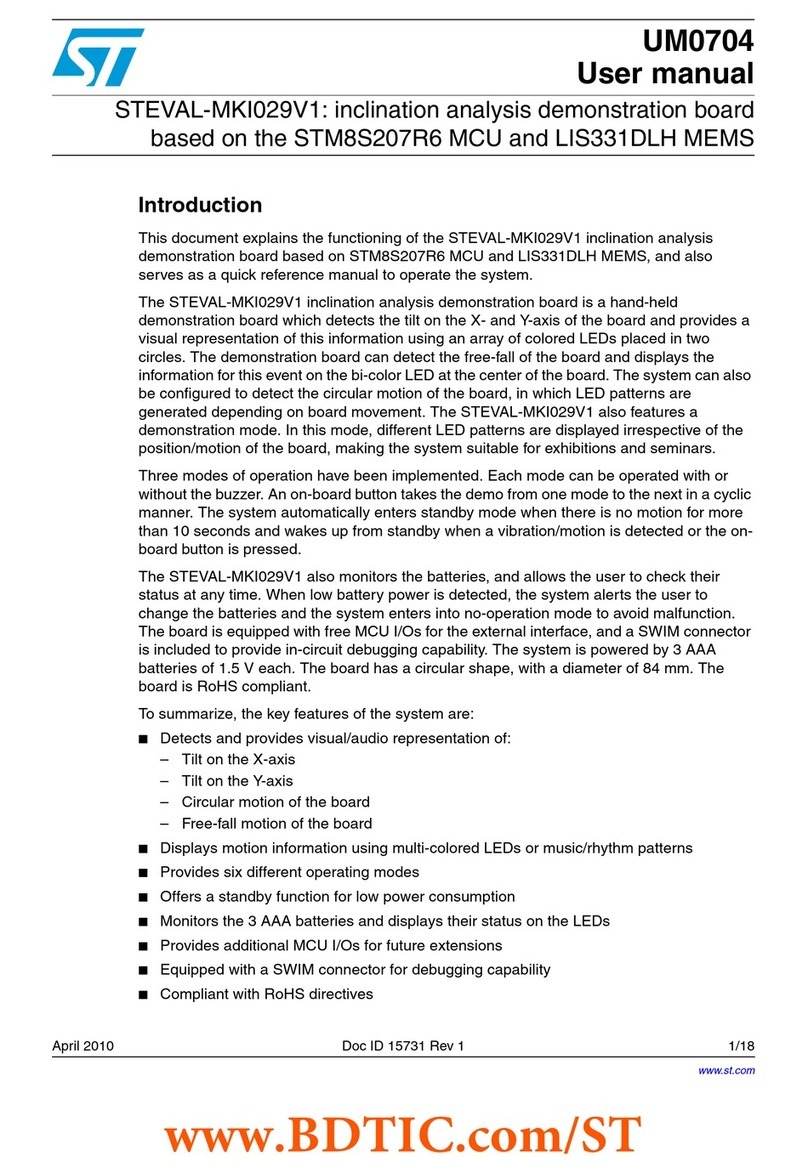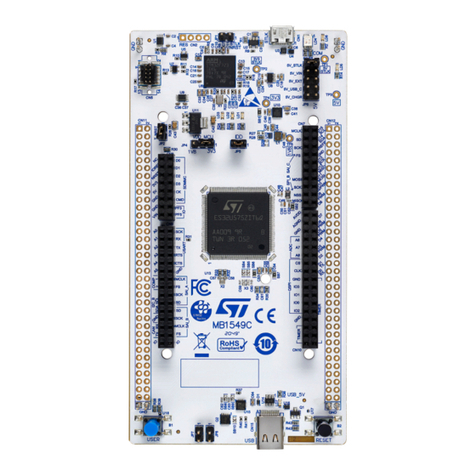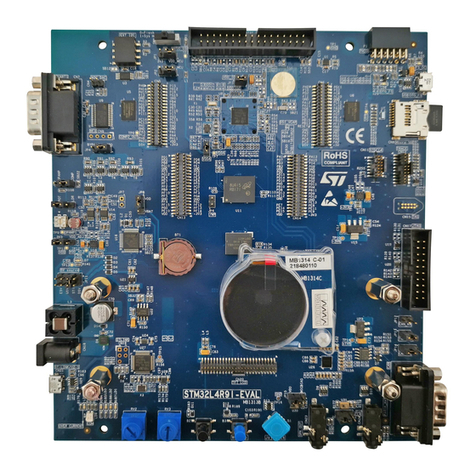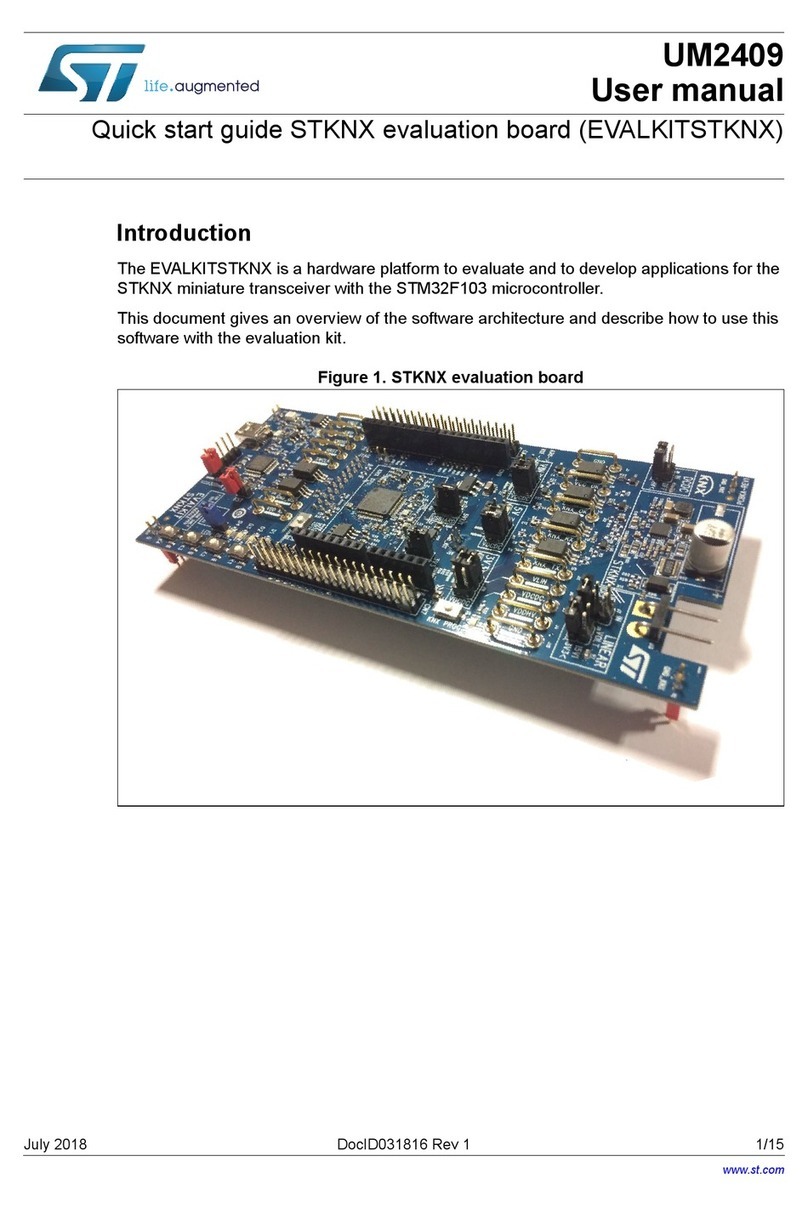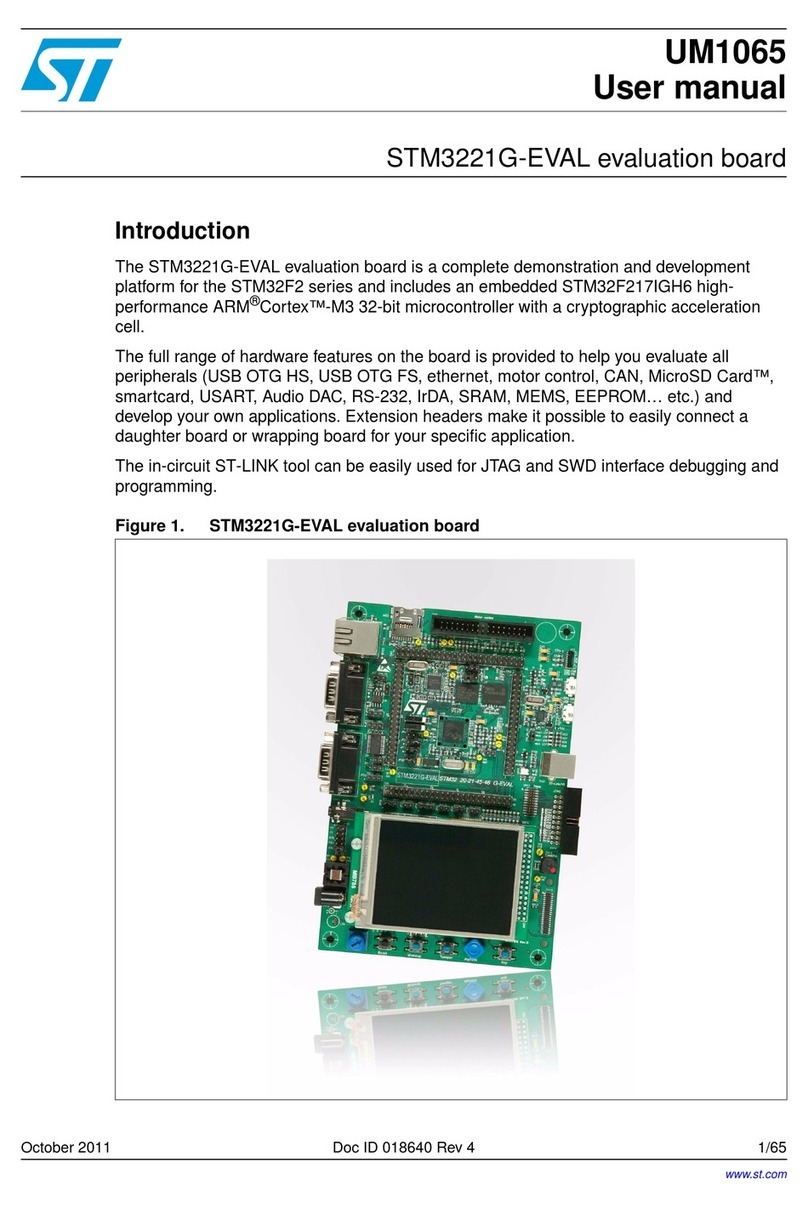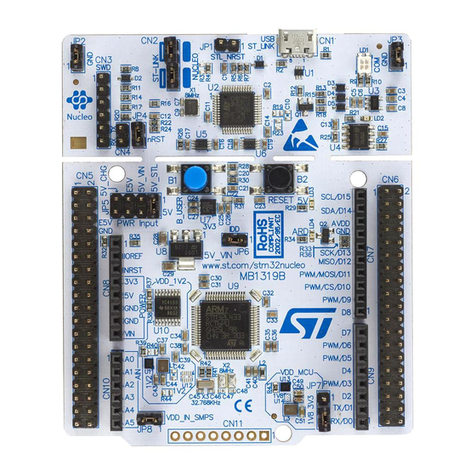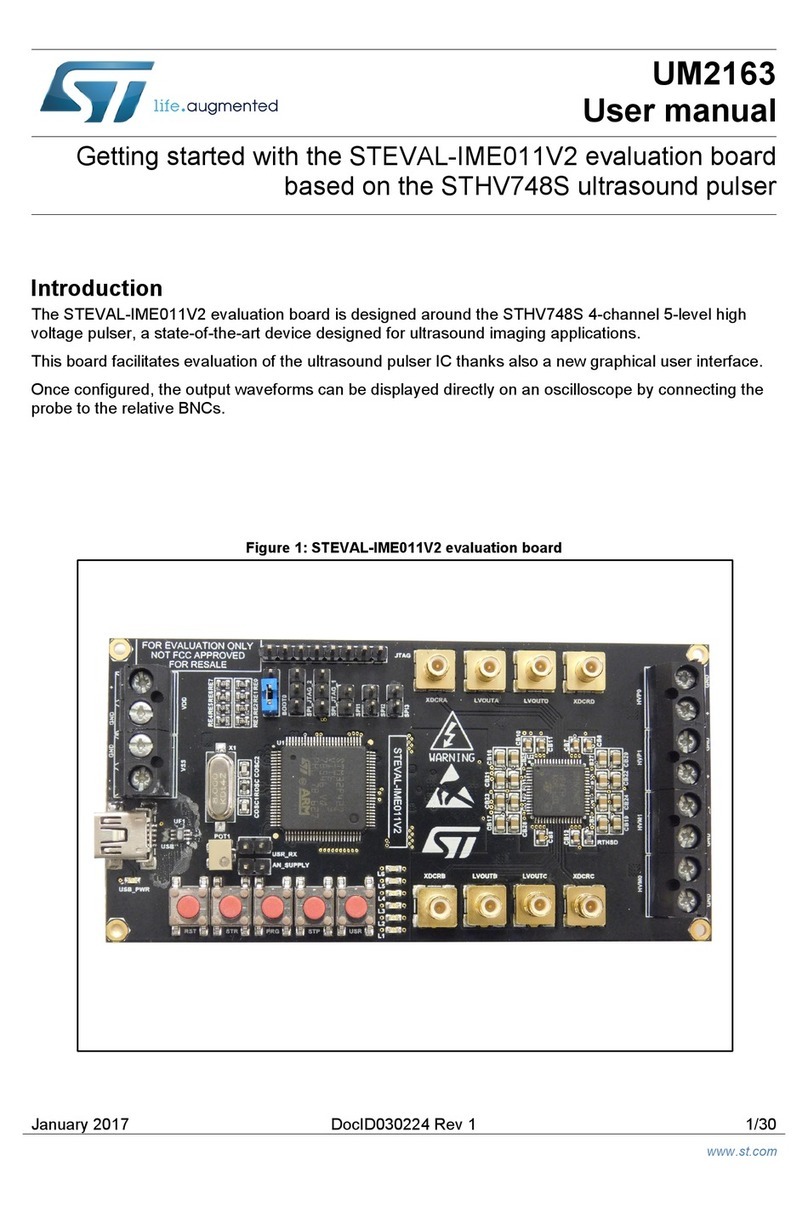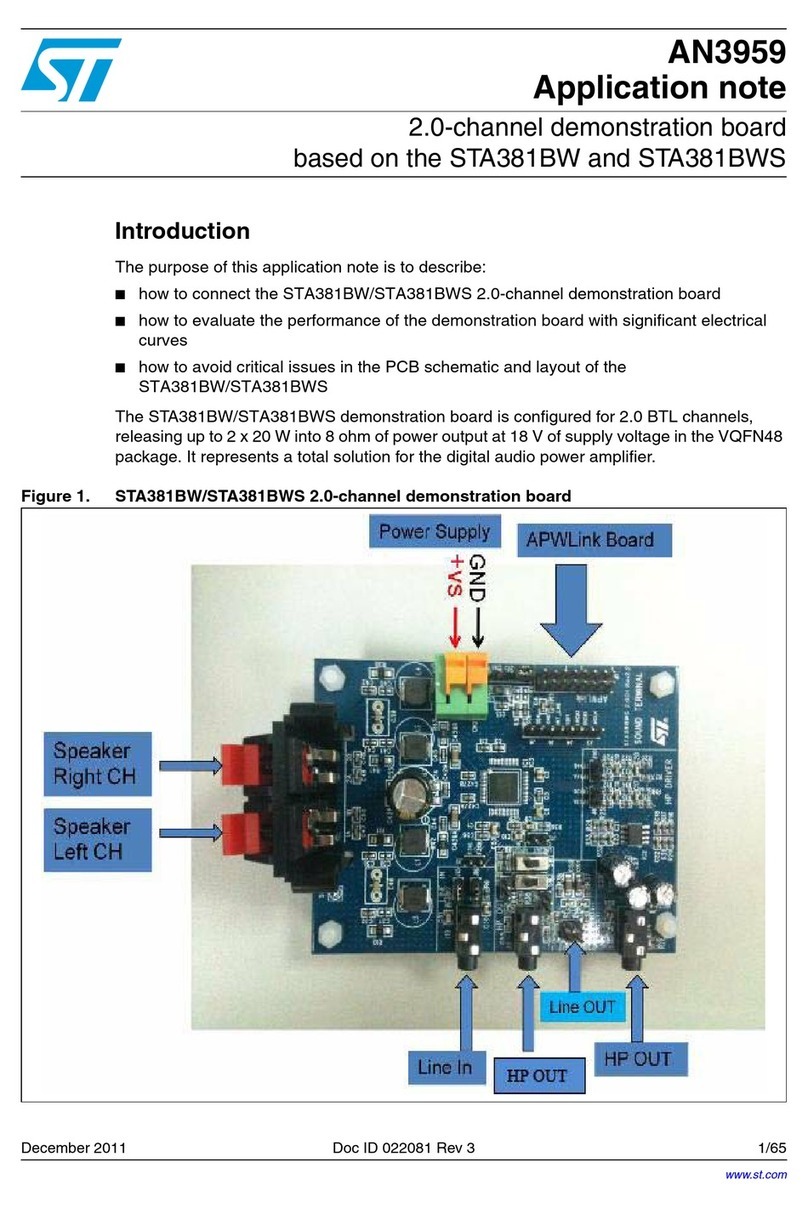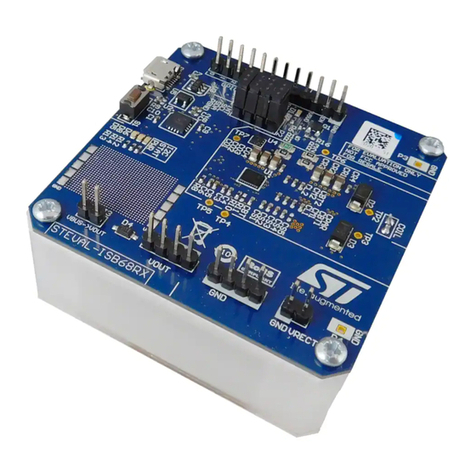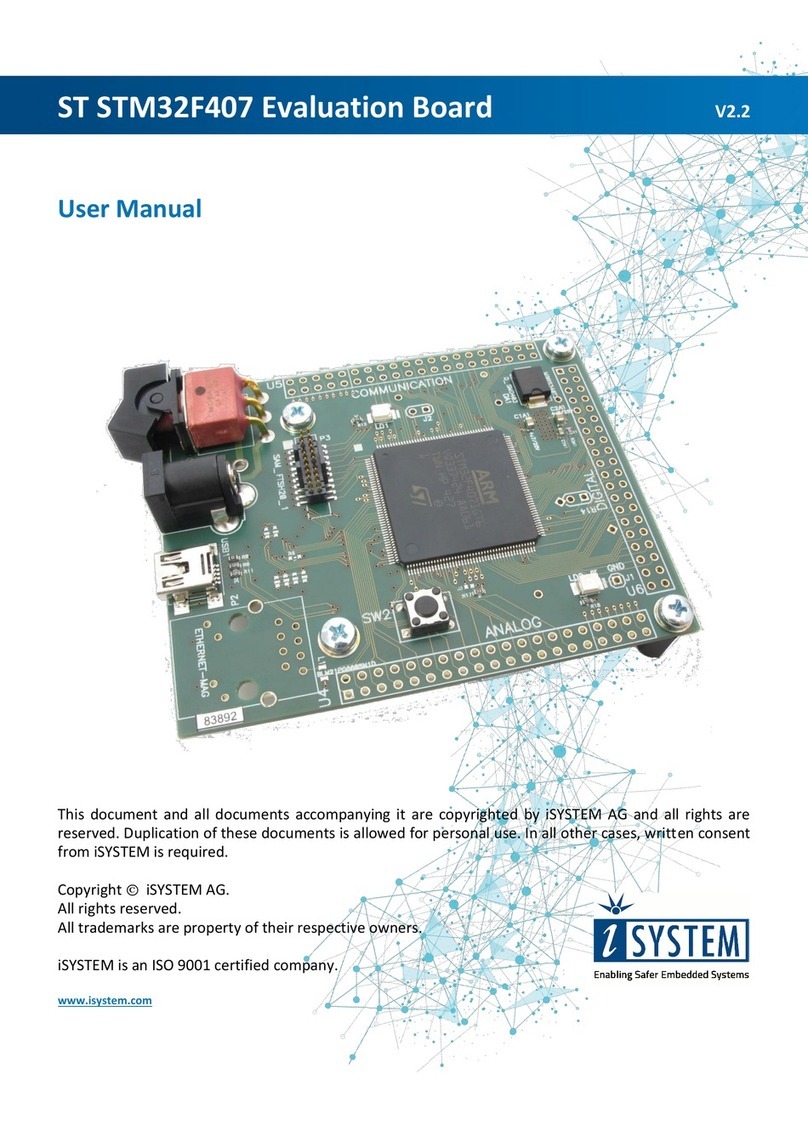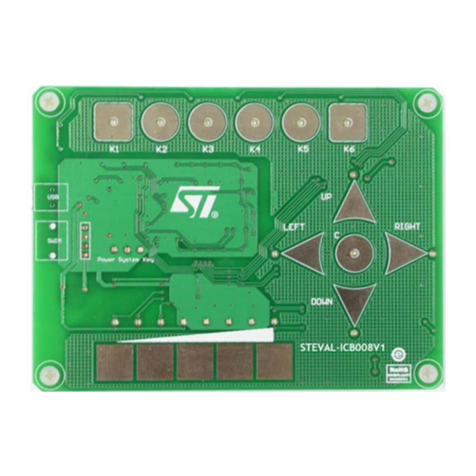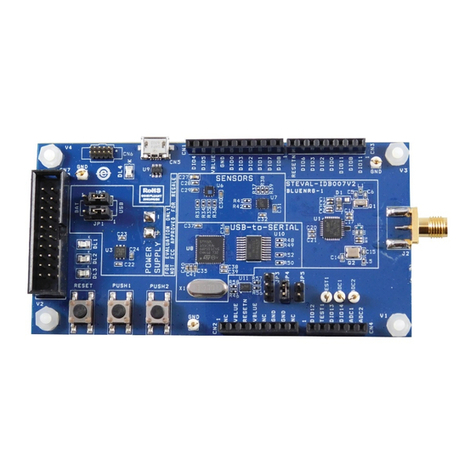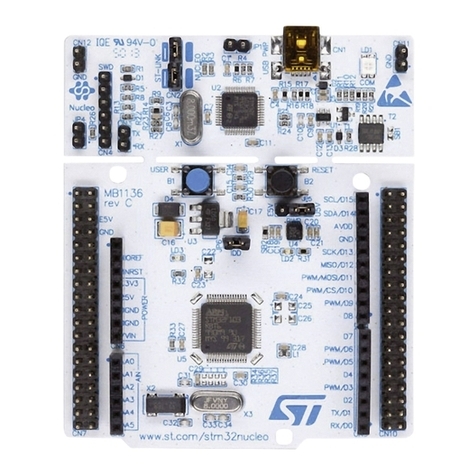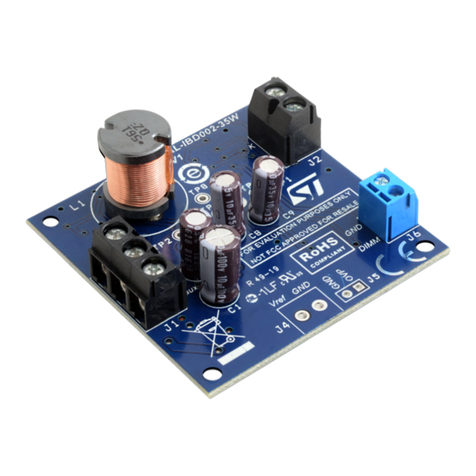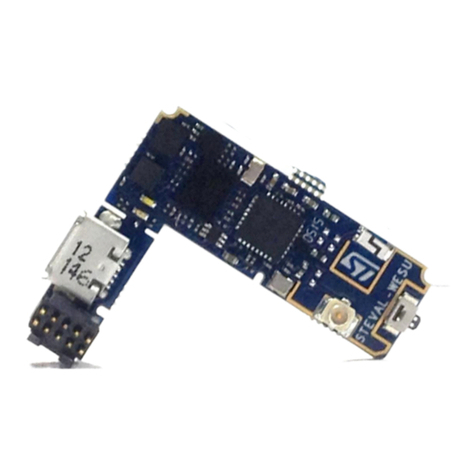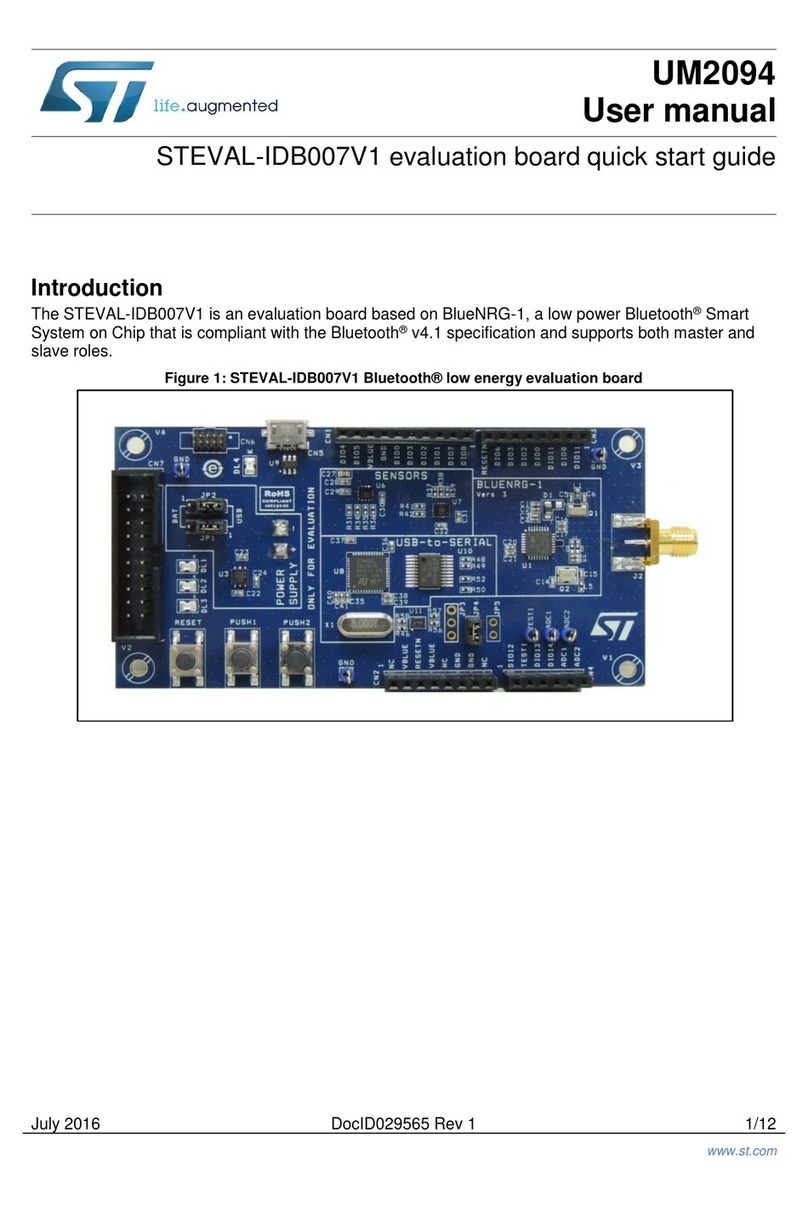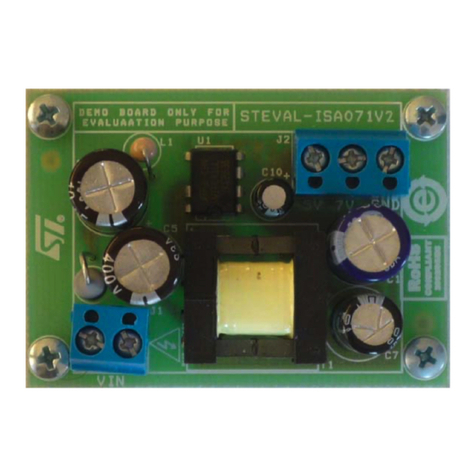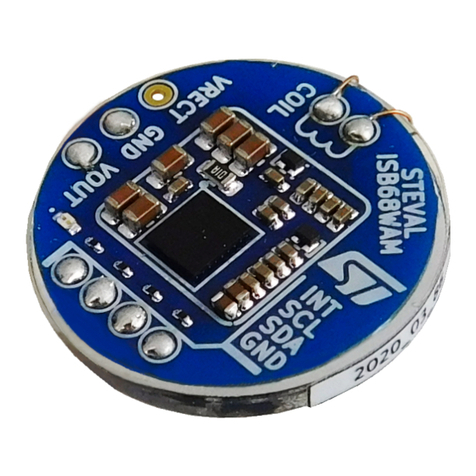
1Getting started
1.1 Overview
The STSW-S2LP-KNX-DK features:
• Firmware package to start evaluation of KNX-RF connectivity based on the S2-LP transceiver
• KNX-RF Tapko technology stack (evaluation license) running on the BlueNRG-2 Bluetooth® LE 5.2 wireless
SoC and STM32L0 microcontrollers
• Application example for KNX-RF and Bluetooth® LE 5.2 controller
• Application example for KNX-RF actuator
• Standalone point-to-point KNX-RF communication between two nodes
• Control and monitoring of KNX-RF devices through KNX ETS5 PC tool
• Combination of KNX-RF and Bluetooth® connectivity in one application
• Sample implementation available on X-NUCLEO-S2868A2 (or X-NUCLEO-S2868A1) expansion boards
when connected to STEVAL-IDB008V2 (BlueNRG-2 Bluetooth Low-Energy) or NUCLEO-L073RZ
development boards
1.2 Folder structure
After downloading the STSW-S2LP-KNX-DK software package, extract its components to a temporary directory.
Figure 1. STSW-S2LP-KNX-DK folder structure
1. Androids Apps (APK file)
2. Pre-compiled binaries
3. Project libraries (BLE, KNX, S2-LP drivers)
4. Keil IDE project examples
1.3 Hardware configurations
To run the STSW-S2LP-KNX-DK evaluation package, the following hardware configurations are possible:
• one running on a STEVAL-IDB008V2 evaluation board based on the BlueNRG-2 Bluetooth® LE 5.2 wireless
SoC plus an X-NUCLEO-S2868A1 or X-NUCLEO-S2868A2 expansion board
• one running on a NUCLEO-L073RZ development board plus an X-NUCLEO-S2868A1 or X-NUCLEO-
S2868A2 expansion board
1.3.1 STEVAL-IDB008V2
To run the demo using the BlueNRG-2 Bluetooth® LE 5.2 wireless SoC, you need:
• a STEVAL-IDB008V2 (for further details, refer to UM2071)
UM2920
Getting started
UM2920 - Rev 1 page 2/71
